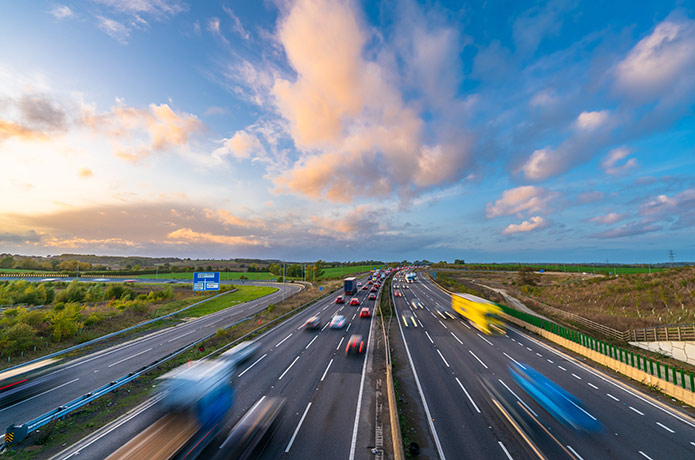Magazine
Driving on fast, multi carriageway roads
- Think about distance
- How should you deal with tailgating?
- Think about your braking
Think about distance
In general, multi carriageway roads tend to be either within a city, where they are used to help the flow of traffic and tend to have a low speed limit, or main roads where usually, the national speed limit applies and it is these that are addressed within this article.
Fast, multi carriageways are designed to allow drivers to cover great distances more quickly, so are an excellent solution for longer distance travel. However, because the traffic moves much faster than on most other roads, great care must be taken when using them and additional precautions applied to use them safely.
The first thing to bear in mind is that the faster you drive, the greater the distance your car will travel before any action you take from behind the wheel, makes a difference to where your car is on the road. In addition, because on an uncongested road everyone is usually travelling at much the same speed, there is a danger that the perception of speed at which the traffic is going, is reduced. Both of these factors can have big ramifications, so need to be fully appreciated and your driving should differ as a result.
A great example is the distance that is required for you to come to a stop when driving at urban speeds compared to these faster roads. Whereas the urban stopping distance is generally considered to be around 23 metres (nine metres of which is the time it take to think and apply the brakes, and the remaining 14 metres the time it takes the vehicle to actually stop), should you drive at twice that speed, the thinking distance increases to 18 metres and the vehicle’s stopping distance to 55 metres, making the total more than three times greater than at urban speeds! This means that leaving a sufficient gap between yourself and the car in front is one of the most effective ways of reducing the possibility of a collision.
However, many drivers do not consider these stopping distances and sometimes even follow the car in front more closely on a fast road than they would elsewhere, a trait commonly described as tailgating. And, according to statistics from National Highways in the UK, tailgating is a factor in more than 10% of the collisions on these faster roads and almost all drivers have seen instances of it.
In addition to the accident risks associated with tailgating, it can often intimidate the driver being closely followed and while it may not be intentional by the driver behind, to those in the car in front, it can feel aggressive.
How should you deal with tailgating?
The first thing to do to reduce the risk of someone tailgating you is to only use the outside lanes when you are overtaking slower vehicles and once that manoeuvre has been safely undertaken, move back into the inside lane.
Second, is to not let the poor behaviour of someone tailgating you to negatively influence your own driving. Simply continue to drive safely and cautiously, aware of, but not affected by, their presence. So, keep a steady speed to allow them to overtake and, when moving between lanes or exiting the road at a junction, signal in good time, so that they have a clear idea of your intentions.
Despite the pressure you might feel, don’t speed up, as this could simply encourage the driver behind you to speed up too, which increases the risks to both parties. Similarly, don’t slow down, as this could irritate the close follower and might trigger road rage or cause more dangerous scenarios to arise. Also, although tempting, don’t stare at the driver behind through your rearview mirror, as this can cause you to lose focus on what’s in front of you, which puts other road users in danger.
Think about your braking
Returning to those perceptions when driving at higher speeds, how and when you apply your brakes also makes a big difference to those around you.
Although there might be instances when you simply have to break as fast and hard as you can to avoid a collision, for example, particularly when driving of fast roads, many drivers use their accelerator and their brakes almost like on/off switches, which is often the root cause of that traffic congestion that has no obvious reason.
This is because if a brake light comes on ahead of you and you too apply your brakes, it can have a chain reaction that passes along the traffic behind you, with the brake action getting little by little slightly longer as it passes down the line, which can eventually lead to cars coming to a standstill, long after you’ve driven by.
To avoid these unnecessary hold ups, try to anticipate what is happening, not just with the vehicle in front, but further ahead and if you see brake lights, initially just lift your foot off the accelerator, which will naturally reduce your speed and might well be all that is necessary to maintain a safe distance from the car in front, but crucially, prevent this knock on effect that causes the standstill that we’ve all experienced.

